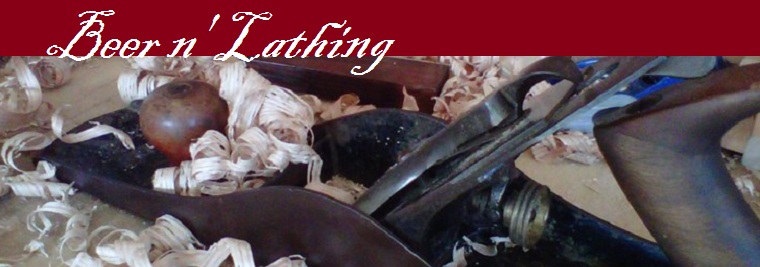I knew when I began my life in the RV that a workbench was a luxury that I wouldn't be entitled to while on the road. As a temporary solution, I purchased a small folding "workbench" that I could store underneath the RV and use when I wanted to do some woodworking. In retrospect, I could have saved 40 dollars and worked on a folding TV tray. It was a pain to get out, the vise mechanism wasn't strong enough, and planing on it was nearly impossible. (During the DVD shelf project, I had my son sitting on the frame to keep it in place as much as possible...I probably could have sharpened the blade a little, but that is another tale). The short of it was that I required a "real" surface to work on.
Recently, I joined a group of woodworkers that meet-up weekly to talk shop, demonstrate different techniques, and answer questions about the craft (they feed me too, but that's a bonus). These skill levels of these people range from beginner to professional and from power junkies to die-hard hand tool users (that would be me). A woodworker's support group that says "you can do it...here's how" was just what I needed to get my sap running again. I was excited that I was a woodworker and dammit, it was time for me to build stuff!
Planning a workbench is like wasting hours on Facebook, you can sit there for ever and never accomplish anything. I wondered what would to use? How many vises would I need? How would I build it? How would I make it portable? Should I use square or round dog holes? (I did seriously think about that.) I was no different than everybody else...I over thought the project. I was stuck int he planning stages. Finally, I decided to take things slowly and let the details iron themselves out.
I began by building some plywood sawhorses, I needed some sort of work surface. Using a design I noticed at my first HOW (Hillsborough Orange Woodworkers) meet-up, I fashioned two "HOW"horses from sheets of 2x4 ft, 3/4 inch plywood and placed the two untouched 2x4 ft sheets on top as my temporary bench.
I decided to try out my temporary solution by sharpening one of my Dad's old saws with new crosscut teeth. (I've sharpened another saw since building the real workbench and being able to do this sitting down is a luxury on my back. Idea for future project: Workbench Stool)
At this point I still had no idea what I was wanting for a workbench. I had to decide my vises before going any further, the top and base both had to be designed around them. Buying one was not an option for me, I wasn't ready to spend over 100 dollars per vise, one tail and one front. I figured I could make one using a wooden screw, so I pick up a tap and die kit, but the revelation come during yet another HOW meet-up were I bought an older vise for 25 dollars!
A solid 12-inch, quick-release vise was just what I needed! I made a trip to Lowes and picked up a small 6-inch vise that I would use as a tail vise and a couple boards. Combined with some legs I had made in Abilene and had stored under the RV, I had a base. The top is merely the same two 3/4 sheets of plywood from before. I screwed them together and attached them to the base using screws and L-shaped brackets. By the end of day 1, I had the tail vise installed.
I then attached the front vise, drilled out some round 3/4 inch dog holes, and added some feet because I felt it was a bit 'tippy'. The finished dimensions are about 26 inches wide by 38 inches tall. I can remove the top and place it in the back seat of the car and the base may or may not fit under the RV. It can however fit in the front door and ride inside if need be. I can also completely disassemble it since I only used screws in the construction. Maybe in the future I will change a few of the screws out for carriage bolts, allowing my to more easily store it. It's current home is semi-permanent until I move along.
This is my workbench. It's not a Roubo, it's mine, and I am very proud of it! :D
Next project: Hand plane birdhouse!






No comments:
Post a Comment
Let me know what you think! Comments and suggestions are always welcome!